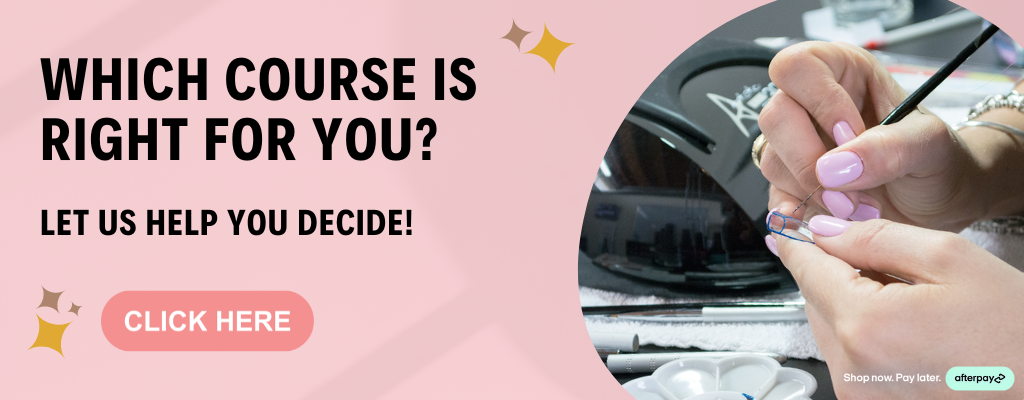-
Lesson Guide
-
Introduction
-
How BIAB Fits Into Your Salon
- What IS Builder In a Bottle
- Is BIAB Right For Your Salon?
- Things to Consider When Choosing a Brand – Bottled VS Potted
- Things to Consider When Choosing a Brand – Viscosity
- Things to Consider When Choosing a Brand – Flexibility
- Things to Consider When Choosing a Brand – Colour
- Things to Consider When Choosing a Brand – Prep Methods
- Things to Consider When Choosing a Brand – Required Maintenance
- Things to Consider When Choosing a Brand – Removal Method
- Things to Consider When Choosing a Brand – You Need A New Lamp
- Exothermic Reactions
- FAQ – Are there any ingredients in BIAB that can cause damage to the natural nail?
- When to Choose BIAB For Your Clients
- Nailbiters and BIAB
- BIAB vs IBX
- How to Price BIAB Services
-
BIAB Overlays
- Natural Nail Prep
- Natural Nail Prep for Artistic Correction Gel
- Natural Nail Prep – Written Steps
- The Two Types of Overlays
- Simple BIAB Overlay – Introduction
- Simple BIAB Overlay – Video
- Simple BIAB Overlay – Written Steps
- Simple BIAB Overlay – Self Evaluation
- FAQ – Can we flash cure BIAB?
- FAQ – How thick should your application be?
- Just a Reminder
- Structured Overlay – Introduction
- Structured Overlay – Video
- Filing
- Structured Overlay – Written Steps
- It’s Time to Book a Lesson!
- Super Important Peer Advice
- Structured Overlay – Self Evaluation
- FAQ – How can I achieve smooth application?
- Cold VS Warm BIAB
- FAQ – How thick should this product be in the stress area?
- FAQ – What are my options for completing a BIAB service, eg top coats?
- Full Structured Overlay in Real Time
-
BIAB Extensions
- Introduction to BIAB Extensions
- Applying Forms
- BIAB Extensions with Forms – Introduction
- BIAB Extensions with Forms – Video
- BIAB Extensions With Forms – Written Steps
- Applying Tips
- BIAB Extensions with Tips – Introduction
- BIAB Extensions with Tips – Video
- BIAB Extensions With Tips – Written Steps
- Full Set of Extensions in Real Time
- BIAB Extensions With Tips or Forms – Self Evaluation
-
Maintaining BIAB
- Backfills – Introduction
- Overlay Backfill – Video
- Overlay Backfill with an E-File
- Extensions Backfill – Video
- Backfills – Written Steps
- It’s Time to Book a Lesson!
- Backfills – Self Evaluation
- FAQ – How can you tell if you need to soak off and start again instead of backfilling?
- FAQ – How do we check for developing infections if we only backfill?
- How to Soak Off BIAB – Introduction
- How to Soak Off BIAB – Video
- How To Soak Off BIAB – Written Steps
- Full Removal in Real Time
- BIAB Removal – Self Evaluation
- Blood Spill Drill
- Blood Spill Drill Answers
-
Troubleshooting FAQs
-
Bonus Content
-
Finished!
Builder in a Bottle
